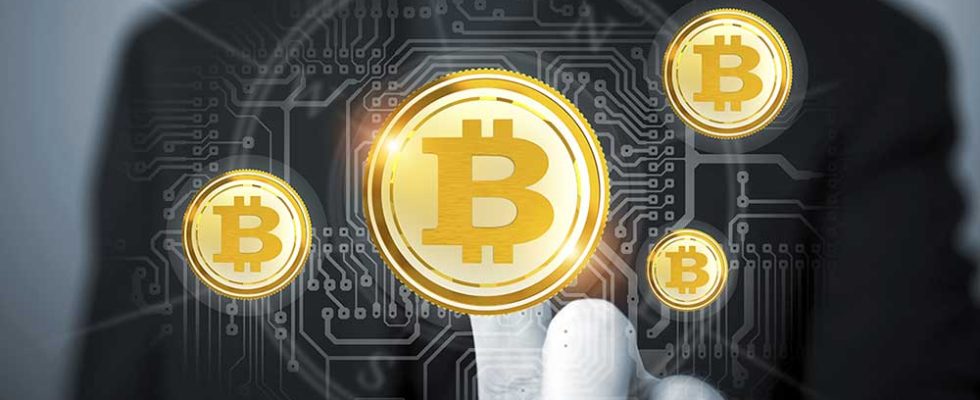The Internet has transformed the world in unprecedented ways over the past few decades. It has connected people, facilitated information exchange, and revolutionized industries. However, as the Internet evolved, certain shortcomings became evident. Centralization, data privacy concerns, and digital monopolies have raised questions about the Internet’s original promise of being a decentralized and democratized space. Additionally, the Immediate Code 360 trading bot is changing the way traders approach crypto trading and transfer control and confidence into their hands.
Understanding Bitcoin and Blockstack
Bitcoin: The Digital Gold of the Internet
Bitcoin, often hailed as “digital gold,” emerged in 2009 as the world’s first decentralized cryptocurrency. Its underlying technology, blockchain, introduced a paradigm shift in how we think about trust and value exchange.
- History and Evolution of Bitcoin: Bitcoin’s genesis marked the beginning of a new era in digital finance. Created by an anonymous entity known as Satoshi Nakamoto, it aimed to provide an alternative to traditional financial systems.
- Decentralization and Trustlessness: Bitcoin’s decentralized nature means it operates without a central authority, such as a government or bank. Truthfulness is achieved through the blockchain, which ensures transparent and tamper-proof transactions.
- Role in a User-Owned Internet: Bitcoin’s core principles align with the vision of a user-owned Internet. It enables secure and borderless value transfer, facilitating the monetization of digital content and services without intermediaries.
Blockstack: Reimagining Internet Infrastructure
Blockstack is a blockchain-based platform that envisions a decentralized Internet, where users have greater control over their data and identities.
- Overview of Blockstack: Blockstack provides the foundation for a user-owned Internet by offering a decentralized infrastructure for building and running applications. It leverages the Bitcoin blockchain for security.
- Decentralized Identity and Authentication: Blockstack enables users to create self-sovereign digital identities, reducing reliance on centralized authentication providers.
- Smart Contracts on Blockstack: Developers can create smart contracts using Blockstack’s Clarity programming language, opening up possibilities for decentralized applications (DApps) with transparent and secure logic.
The Problems with the Current Internet
Centralization and Data Privacy
The current Internet is dominated by tech giants that control vast amounts of user data. This centralization poses significant risks to user privacy and security.
Digital Monopolies and Their Consequences
Tech monopolies have immense power, influencing information flow and stifling competition. This results in limited innovation and unequal access to online resources.
Censorship and Content Control
Centralized platforms can arbitrarily censor content, limiting free expression and raising concerns about digital authoritarianism.
Bitcoin and blockstack’s Approach to a User-Owned Internet
Bitcoin’s Role in Financial Sovereignty
- Micropayments and Content Monetization: Bitcoin’s ability to facilitate microtransactions empowers content creators to monetize their work directly, reducing reliance on advertising revenue.
- Decentralized Finance (DeFi) on Bitcoin: DeFi applications built on Bitcoin’s blockchain provide financial services without intermediaries, offering greater financial autonomy to users.
blockstack’s Decentralized Ecosystem
- Building Decentralized Applications (DApps): Developers can create DApps on Blockstack, ensuring user data remains in their control while providing secure and transparent services.
- User-Owned Data and Privacy: Blockstack’s architecture enables users to own their data and selectively grant access, mitigating data privacy concerns.
- The Stacks (STX) Token: Fueling the Ecosystem: STX tokens are used for network operations and incentivizing developers, ensuring the sustainability of the Blockstack ecosystem.
User Empowerment and Data Ownership
Taking Control of Personal Data
Users can reclaim control of their data from tech companies and decide who accesses it and for what purpose.
Digital Identity and Self-Sovereignty
Blockstack’s decentralized identity system allows users to manage their digital identity, reducing reliance on third-party authentication providers.
User-Centric Applications and Services
Decentralized applications built on Blockstack prioritize user experience and data ownership, fostering a more user-centric Internet.
Challenges and Obstacles
Adoption and Network Effects
Widespread adoption of user-owned Internet solutions like Blockstack requires overcoming network effects and transitioning from existing centralized platforms.
Regulatory Hurdles and Compliance
Blockchain and cryptocurrency technologies face regulatory challenges, necessitating cooperation with governments to ensure compliance.
Technological Scalability
Scalability is crucial for user-owned Internet platforms to accommodate a growing user base and DApp ecosystem.
The Future of a User-Owned Internet
Potential Impact on the Internet Landscape
A user-owned Internet could reshape digital interactions, challenging the dominance of tech giants and promoting a more equitable online environment.
Synergy Between Bitcoin and Blockstack
The collaboration between Bitcoin and Blockstack highlights the potential for blockchain technologies to work together to create a decentralized Internet.
Emerging Use Cases and Innovations
As the user-owned Internet evolves, new use cases and innovations will continue to emerge, revolutionizing various industries.
Conclusion
In the pursuit of a user-owned Internet, driven by the principles of Bitcoin and Blockstack, a promising alternative to the prevailing centralized model emerges. This transformative shift holds the potential to empower individuals, redefine digital interactions, and reestablish trust in the online realm. However, realizing this vision requires widespread adoption and the resolution of various challenges.

